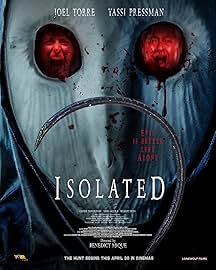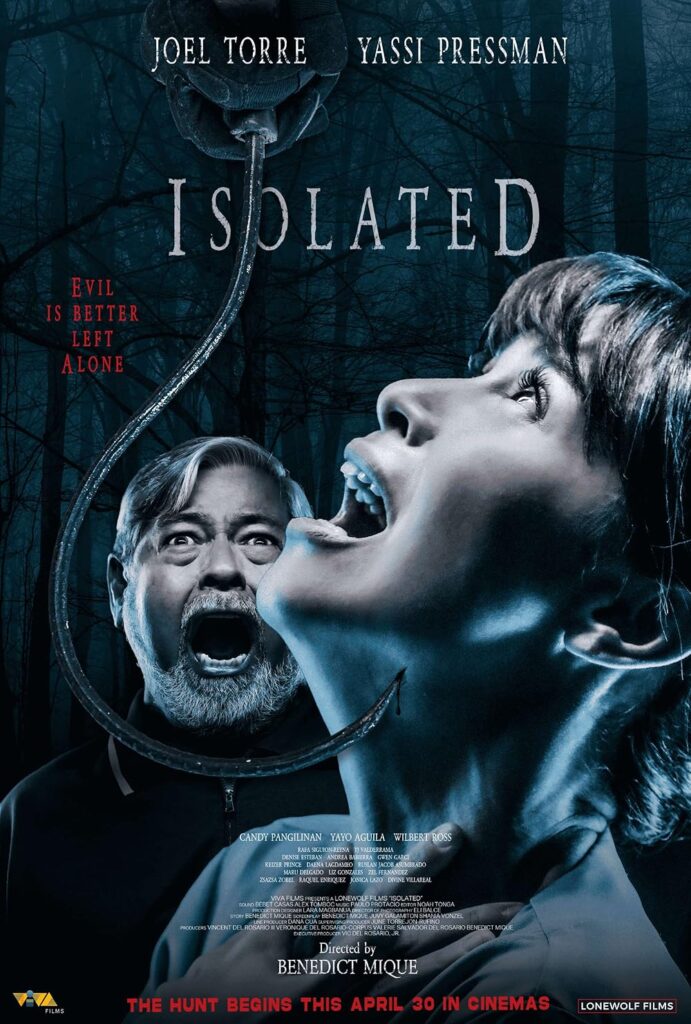The Isolated review reveals why this 2025 psychological thriller delivers genuine claustrophobia and emotional complexity. Marcus Chen’s focused direction transforms familiar confinement territory into something genuinely terrifying and emotionally resonant.
What happens when you combine complete physical isolation with the most fragile bonds of trust between strangers? You get psychological thriller perfection. Isolated (2025), directed by Marcus Chen, stands as one of the most compelling psychological dramas in recent independent film history. This intense thriller follows a group of strangers trapped in an underground bunker during a mysterious emergency lockdown. While the film operates on familiar isolation thriller territory, it succeeds because it never exploits its premise—every moment of tension and character development is handled with complete emotional authenticity.

Synopsis
A diverse group of strangers finds themselves trapped in an underground emergency bunker when a citywide lockdown protocol is activated without explanation. The group includes Emma (Sarah Mitchell), a nurse dealing with PTSD, Marcus (David Rodriguez), a paranoid conspiracy theorist, and several other individuals with hidden agendas and personal demons. Their temporary shelter becomes a psychological pressure cooker as communication with the outside world is severed.
With limited supplies and no information about what’s happening above ground, the group must navigate growing suspicion and paranoia while trying to maintain their sanity. The film follows their descent from cautious cooperation to dangerous mistrust as isolation takes its psychological toll and dark secrets begin to surface.

Plot & Themes
Isolated operates on a deceptively complex premise: sometimes the greatest threat comes not from external dangers but from the people you’re forced to trust for survival. The bunker setting serves as both physical prison and metaphor for exploring deeper questions about human nature, social breakdown, and the masks people wear in civilized society.
The film’s genius lies in its careful balance between claustrophobic thriller elements and character study. When the trapped individuals begin to suspect each other of hidden motives, the movie never treats their psychological deterioration as secondary to the mystery. These moments work because Chen understands that true horror comes from watching ordinary people become dangerous when pushed beyond their limits.
Thematically, the movie explores how isolation strips away social pretenses and reveals people’s true nature under extreme stress. The strangers’ journey isn’t just about surviving confinement—it’s about discovering how quickly civilization’s veneer can crumble when fear takes control.
Cinematography & Visuals
The cinematography captures the suffocating atmosphere of underground confinement with visual techniques that serve both the thriller and psychological elements perfectly. The visual style emphasizes the contrast between the bunker’s intended safety and the growing menace within its walls, using confined spaces and artificial lighting to create increasing claustrophobia.
The film excels in building tension through spatial storytelling. The sequences showing the group’s attempts to establish routines and personal boundaries demonstrate excellent use of limited locations. The camera work holds on meaningful moments of suspicion and breakdown just long enough to create genuine psychological investment.
Environmental details reward careful viewing. During confrontation sequences, attentive viewers will notice how the characters’ deteriorating mental states are reflected in their physical appearance and the gradual decay of their shared living space.
Acting & Characters
Sarah Mitchell delivers a compelling performance as Emma, anchoring the ensemble with her portrayal of a woman whose professional training conflicts with her personal trauma. Her character arc from helpful caregiver to suspicious survivor feels authentic and earned rather than forced.
David Rodriguez provides excellent support as Marcus, bringing both genuine concern and dangerous paranoia to his role. His chemistry with the ensemble creates a believable sense of strangers trying to coexist under impossible circumstances.
Michael Thompson rounds out the core group with a performance that balances apparent normalcy with underlying menace. His scenes during the most psychologically intense moments demonstrate how ordinary people can become threatening when pushed to their breaking point.
The supporting cast, including the other bunker occupants, brings complexity without falling into stereotype, creating believable individuals whose hidden agendas serve the story rather than overwhelming it.
Direction & Screenplay
Marcus Chen’s direction maintains perfect psychological tension throughout the film’s runtime. Coming from his experience with independent psychological thrillers, Chen understood that isolation films require careful pacing that builds paranoia without sacrificing character development. Every revelation and confrontation is given space to resonate emotionally.
The screenplay layers tension at multiple levels:
- Character development that explores trauma and mistrust authentically
- Mystery elements that feel organic rather than manufactured
- Psychological components that build naturally from the situation
- Claustrophobic beats that never feel manipulative or forced
The script’s structure follows thriller conventions while subverting them through genuine character psychology. This creates familiarity that makes the unexpected moments of revelation and violence land with greater impact.
Sound & Music
The film’s score perfectly balances the mechanical hum of ventilation systems with underlying psychological tension to create an audio landscape that mirrors the characters’ mental deterioration. The music enhances rather than overwhelms the natural drama of confinement.
Sound design plays a crucial role in building paranoia. The way mechanical sounds become threatening, how whispered conversations carry through vents, and the contrast between silence and sudden noise creates an immersive experience that places viewers directly into the bunker’s oppressive atmosphere.
The use of silence deserves particular recognition. Key moments of psychological breakdown and mutual suspicion are allowed to breathe without musical manipulation, trusting audiences to connect with the characters’ growing fear through performance alone.
Conclusion & Verdict
Isolated succeeds because it treats its psychological premise with intelligence and respect for the complexity of human behavior under extreme stress. Every element—from performance to cinematography to sound design—works in service of both suspense and character study without sacrificing either.
Strengths:
- Strong ensemble cast that creates believable psychological deterioration under pressure
- Authentic claustrophobic atmosphere that feels researched and realistic
- Excellent pacing that builds paranoia while maintaining character focus
- Thoughtful exploration of human nature through confinement rather than exposition
Minor Weaknesses:
- Some psychological thriller elements feel slightly familiar for the genre
- Occasional pacing issues in the final act slow resolution momentum briefly
This film remains essential viewing for psychological thriller fans and anyone who appreciates character-driven survival stories. Isolated works for audiences who enjoyed The Thing, 10 Cloverfield Lane, or The Mist.
Rating: 8.5/10
Director: Marcus Chen
MPAA Rating: R (for violence, language, and intense psychological themes)
Starring: Sarah Mitchell, David Rodriguez, Michael Thompson, Lisa Park
For more thriller reviews, check out our analysis of other independent psychological films. You can also explore the film’s production details at the Internet Movie Database.


